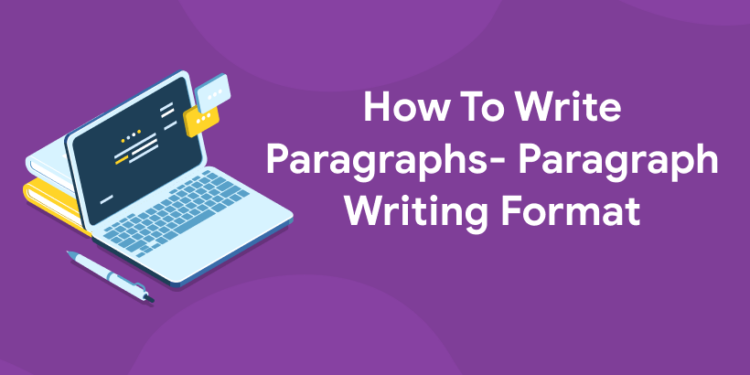Table of Contents
Writing a paragraph can be an intimidating task, especially when you’re already feeling pressed for time and have plenty of assignments to complete. The best way to conquer this fear and write the kind of paragraphs you want is to learn how to write them from start to finish. This guide on how to write paragraphs will help you learn everything from how many sentences should go into each paragraph, the proper format of each one, and even tips on writing introductory and concluding paragraphs that are sure to impress your readers and get you the grade you deserve on your essay. In order to write engaging, high-quality essays, you must know how to craft effective paragraphs. Using the proper format will help you convey your message clearly, support your points with appropriate examples and arguments, and transition from one idea to the next in an effective manner. If you’re not sure how to write a paragraph, or even how many paragraphs you should include in your essay, this tutorial will teach you all about writing paragraphs and improve your essay writing skills.
Get the latest updates on spoken English classes in the Entri app
Introduce Your Topic
Make sure you introduce your topic early on in your paragraph. There are two reasons for doing so: first, to let your reader know what they should expect from your paragraph; and second, to show them what point you’re making. If you begin with an example or anecdote that has nothing to do with your paragraph, then readers may assume that it’s irrelevant. Introduce each topic (or sub-topic) within a paragraph separately by using phrases like one thing is and another thing is. You can also use transitions like moreover and furthermore to make sure you do not leave out anything important while going through each main point of your paragraph. When you start a new paragraph, always check if there are any terms/ideas which need further explanation.
Also, remember to rephrase or paraphrase your ideas every time when you start a new paragraph as it will help to keep things clear for your readers. It will also ensure that all your paragraphs flow smoothly together without repetition and unnecessary tangents. If you find yourself struggling with how to write a good introduction of any sort (including paragraphs), then read about how best to write an essay introduction. And if there is any other advice we could give about writing effective introductions in general, we would say don’t be afraid! It’s important to learn how to write a good paragraph when writing professionally. Not only does this help you clearly and succinctly convey your thoughts, but it also helps the reader follow along more easily and understand your writing with minimal effort on their part. These five tips will help you figure out how to write the perfect paragraph every time!
State Your Opinion
1: Which of the sentences below is grammatically correct?
Before you begin to write, decide what you want to say. Each paragraph should be based on one main idea that’s supported by specific details. The idea could be a thesis, an opinion, or a summary of what you plan to prove with your paper as a whole. It will usually appear at the end of your introductory paragraph, but if it doesn’t fit there, just be sure it’s included somewhere in your opening statement. This may seem like stating something obvious and common sense: Tell ’em what you’re gonna tell ’em, then tell ’em, as Elmer Gantry’s editor instructed him. But even experienced writers sometimes forget to do so. And when they do, their paragraphs lack direction. Even worse is when they start out telling us what they’re going to tell us—and then never get around to doing it! So before you put pen (or fingers) to paper (or screen), take a moment and make sure you know where your paragraph is headed. If you don’t know yet, think about how you can find out more about your topic so that when you sit down to write, ideas won’t fail you.
To know more about spoken English classes in Entri app
Spoken English Course for Guaranteed Confidence and Career Growth
Spoken English Course by Entri App: Enhance your communication skills, gain certification, and boost your career with confidence.
Join Now!Support Your Idea With Examples
Remember to give at least one example of your idea in action. If you are trying to make people aware of a fact, for example, share an example of where and when it occurred (or could occur). The more specific and accurate you can be with your examples, the better. However, if you do not have any personal experience with your topic, search for examples from other writers or news sources to back up your facts. In either case, support your ideas with evidence from outside sources. At the very least, provide insight into how you arrived at that conclusion yourself by sharing how certain pieces fit together; elaborate on how they work or don’t work independently as well as in relation to each other. Don’t forget to include a list of references in your endnotes or bibliography.
These will help others find additional information about your topic should they need it. You may also want to include links within your post so readers can access relevant websites directly. Again, just remember to cite them properly so everyone knows where you found them! Finally, even though research is key to any essay, try not to overdo it—you want readers coming away from your post with something useful or interesting, not just weighed down by all those boring statistics! It is crucial that a person read over their own writing before publishing because spelling mistakes and grammatical errors reflect poorly on a writer’s professionalism. Here are some tips for improving writing:
Start your preparations with Entri app
Conclude Your Paragraph
Tie up your paragraph by restating your main point. This is a good place to build on your original theme or use more evidence to show why it’s such an important issue. Whether you’re writing about politics, sports, history, or fashion, remember that every paragraph should have an introduction and conclusion. If you write with that in mind, you can make sure that each of these sections supports and strengthens your idea as much as possible. Here are some more pointers: Write short paragraphs: No one likes to read a string of walls of text. Aim for 2-4 sentences per paragraph—too much longer than 4 and you might risk losing readers altogether. Plus, shorter paragraphs help keep your essay organized and easy to follow. It also makes it easier for readers to skim through your paper looking for specific information. Use transition words: Transition words help create cohesion between ideas in different parts of a sentence or even different sentences within a paragraph. For example, if you say first…second…third…fourth… (no commas) then there’s no clear connection between ideas; however, if you say firstly…secondly…thirdly…fourthly… then there is a clear connection between ideas.
Start speaking English fluently with Entri app
Improving Sentence Structure
One of the most common mistakes students makes when writing is trying to cram too much information into a single sentence. If you find yourself doing it, try expanding your sentences and paragraphs instead. Doing so will improve your writing’s flow, clarity, and readability. There are many ways to do it, but one way is to shuffle your words around. Don’t stop at adding more words; move entire phrases or sentences that don’t fit into your new larger one (and delete those you don’t want). Often times these moves can help clarify what you are trying to say or even create smoother transitions between ideas. Then edit for grammar and spelling errors. You may also want to consider reading over your work aloud. It helps identify awkward phrasing and hard-to-read sentences. If you are interested to learn new skills, the Entri app will help you to acquire them very easily. Entri app is following a structural study plan so that the students can learn very easily. If you don’t have a background, it won’t be any problem. You can download the Entri app from the google play store and enroll in your favorite course.
Get the latest update on spoken English classes in Entri app










